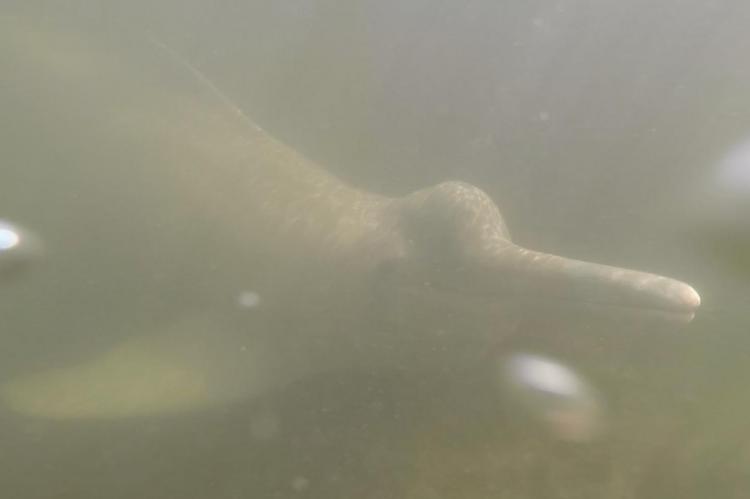River dolphin offers clues to marine mammal communication
Locally known as botos, the recently discovered Araguaian river dolphin of Brazil (Inia araguaiaensis), which was thought to be solitary, with limited social interaction, has been found to make hundreds of different sounds to communicate with others. The discovery could help researchers learn how communication evolved in marine mammals.
“We found that they do interact socially and are making more sounds than previously thought,” said Laura May Collado, a biologist at the University of Vermont and co-author of the study, which was published in the journal PeerJ. “Their vocal repertoire is very diverse.”
Individual botos are difficult to study, because they are shy animals and hard to find. However, the scientists found a fish market in Mocajuba, Brazil, where the botos showed up regularly to be fed by local shoppers. Using underwater cameras and microphones, the researchers identified 237 different types of sounds made by the dolphins, which they believe is just a sample of their acoustic range. A two-part call made by baby dolphins to their mothers was the most common.
Compared to the acoustic characteristics of other cetacean species, the botos’ vocalizations fell between the low-frequency calls made by baleen whales for long-distance communication and the high-frequency calls made by marine dolphins over short distances. It is thought that the river environment may play a part in shaping these characteristics. ”There are a lot of obstacles like flooded forests and vegetation in their habitat, so this signal could have evolved to avoid echoes from vegetation and improve the communication range of mothers and their calves,” said Collado.
From an evolutionary perspective, river dolphins are relics from an earlier age, since they split off sooner from other cetaceans than other dolphin species. As such, they may offer clues as to how calls may have arisen and later evolved to the whistles and calls of marine dolphins. Further study may shed light on which types of signals evolved first and why.





























